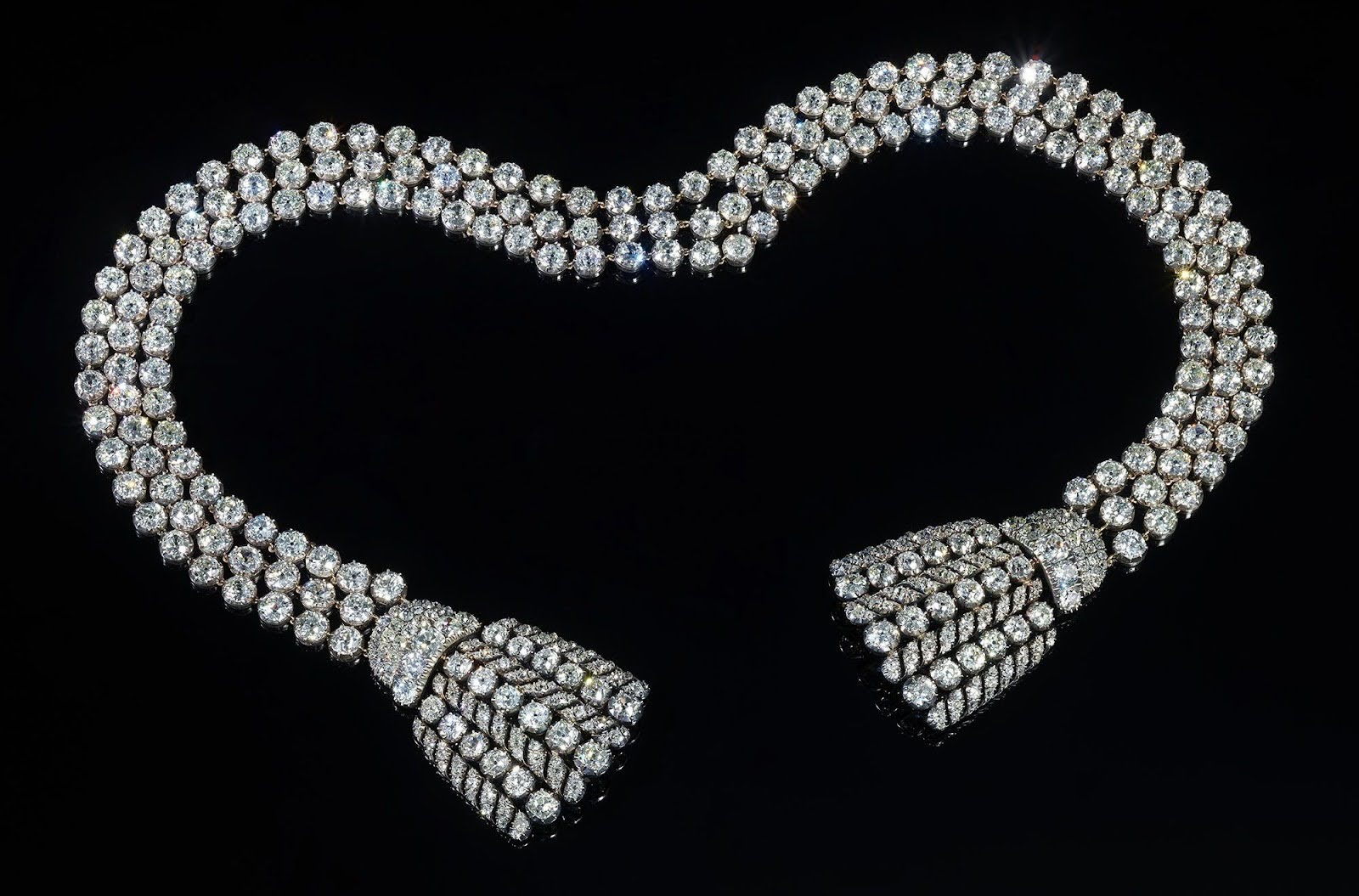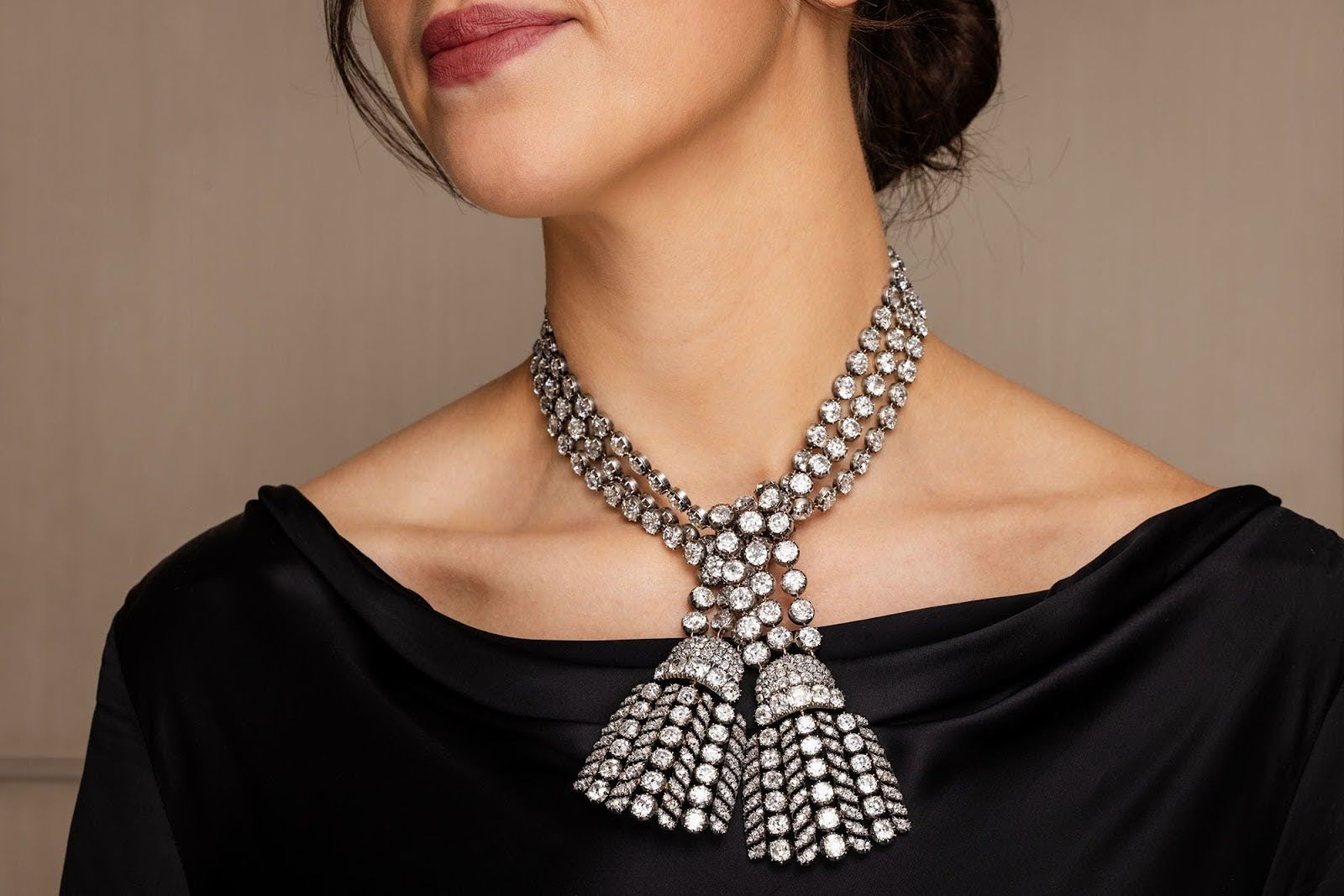A dazzling diamond necklace believed to contain stones from the notorious "Affair of the Diamond Necklace" scandal involving Marie Antoinette fetched a remarkable 4.2 million Swiss francs ($4.8 million) at a Sotheby’s auction in Geneva. Created in the 18th century, the roughly 300-carat necklace likely predates the French Revolution by a decade and is thought to have been commissioned for royalty or a high-ranking aristocrat.
This exquisite piece of jewelry has a storied history. In the 20th century, it was owned by the Marquesses of Anglesey, a British aristocratic family with connections to the royal family. Marjorie Paget, Marchioness of Anglesey, first wore the necklace at the coronation of King George VI in 1937, and it was later worn by her daughter-in-law during Queen Elizabeth II’s coronation in 1953. The family sold the necklace in the 1960s, and it passed through the American Museum of Natural History before being privately owned. The necklace is composed of three rows of brilliant-cut diamonds, each weighing between one and one-and-a-half carats, tapering into a diamond tassel. Sotheby’s experts suggest that the diamonds may have originated from India’s Golconda mines, famous for producing some of history’s most renowned diamonds, including the Hope Diamond.
Andres White Correal, chairman of Sotheby’s Jewellery Europe and Middle East, described the necklace as a "fortune in diamonds" and one of the "most magnificent and intact Georgian jewels in private hands," praising its exceptional craftsmanship and technical innovation. The necklace's connection to the infamous "Affair of the Diamond Necklace" scandal adds to its intrigue. In 1785, a cardinal was deceived into purchasing a luxurious diamond necklace on behalf of someone impersonating Queen Marie Antoinette. The jewelers, thinking they were dealing with the Queen, expected payment, but Marie Antoinette denied any involvement. The necklace was subsequently dismantled, and its diamonds were sold in London. The scandal unfairly tarnished the Queen’s reputation, further fueling public discontent with the monarchy and contributing to the revolutionary fervor that led to Marie Antoinette’s tragic demise.

Though the precise origins of the necklace remain unclear, Sotheby’s suggests that some of its diamonds may have come from the original scandalous piece. This auction marks the first time the necklace has been publicly displayed in 50 years, having previously been part of a traveling exhibition before the sale. Its adaptability, allowing it to be worn as a necklace or tied into a simple knot, reflects the luxurious yet practical nature of Georgian-era jewelry. This versatility speaks to the design trends of the era, where jewels were not only opulent but functional for grand court attire.
Ultimately, the sale of this historic necklace for $4.8 million highlights its rarity and enduring allure. It offers a tangible connection to an era of royal opulence, scandal, and artistry, ensuring its legacy continues to captivate collectors and history enthusiasts alike.









